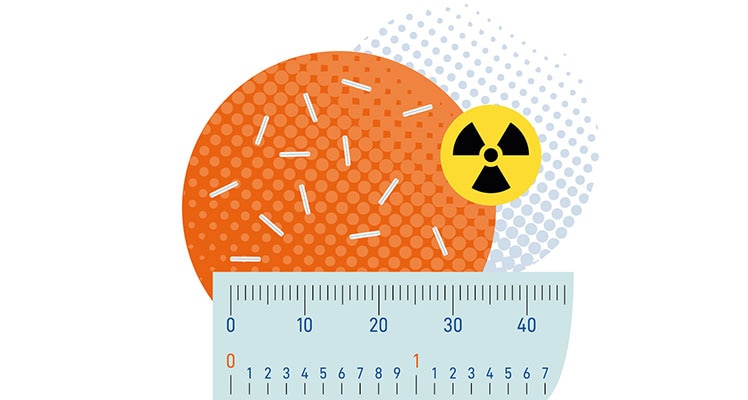
Types of treatment
Surgery is a locoregional treatment for cancers. The proposed procedure is a total prostatectomy, also known as radical prostatectomy. It is the surgical removal of the prostate gland and it typically involves a hospital stay of several days.
It aims to remove the entire prostate and the seminal vesicles*. In some cases, the neighbouring lymph nodes* are also removed; this is called lymph node dissection. This operation is performed by a urologist through open, laparoscopic, or robot-assisted surgery.
The two most common side effects of this surgery are loss of bladder control (incontinence) and the inability to maintain an erection (impotence)

Brachytherapy is a local treatment for cancers. Brachytherapy of the prostate involves placing radioactive sources inside the prostate. These radioactive elements emit radiation that destroys the cancer cells.
There is only limited radiation to surrounding tissues such as the urethra, bladder and rectum. The dose of radiation decreases very quickly in a few millimetres, which limits the undesirable effects* on the neighbouring healthy tissues.
The seeds are usually permanently implanted, and the radiation dissipates in several months.

There are two forms of brachytherapy:
- permanent implants of iodine 125 seeds. In this case, the radioactive seeds remain permanently implanted in the prostate
- temporary implants, generally of iridium 192 sources. This is also known as the high dose rate technique. In this case, once the irradiation has been carried out, no radioactive source remains in the prostate.
Brachytherapy may be used alone or in combination with external beam radiation and/or hormonal therapy. Generally, it is an outpatient procedure.
Some patients experience inability to maintain an erection (impotence), loss of bladder control (incontinence), and narrowing of the urethra (urethral strictures)
Radiotherapy is a locoregional treatment for cancers. It uses ionising radiation to destroy cancer cells by preventing them from multiplying. It consists of precisely directing this radiation (also called rays or radiations) on the area to be treated, while preserving as much as possible the healthy tissues and the neighbouring organs, known as organs at risk (in particular the bladder and the last segment of the digestive system: rectum and anal canal).
This radiation is produced by a device called a linear accelerator.
The treatment is divided into about 20 to 40 sessions spread over 4 to 8 weeks,4,5 days a week. During the sessions, which last about 20 minutes, the patient remains motionless on the treatment table and the machine delivers the rays without causing any pain to the patient.
Side effects may include problems with urination and impotence, as well as injury to the bowel.

When an early low-risk tumour is localized and not causing symptoms, a surveillance technique may be recommended.
Since many prostate cancers are slow growing, a physician may recommend close observation for a period of time without any active treatment, during which the tumor’s progress is carefully monitored through PSA controls. A new biopsy can be repeated to confirm that the low-risk tumor is not progressing to a higher-risk group. The aim is to delay treatment and the associated side effects* until it becomes necessary

Hormones are administered to lower the levels of testosterone (male hormone) or to block testosterone receptors which slows the growth of cancerous cells over a period of time. Under certain circumstances, hormones may be used in combination with brachytherapy to shrink the prostate and the tumour.
Prostate cancer is a so-called hormone-sensitive cancer, i.e., its development is stimulated by male hormones*: androgens and more particularly testosterone, which is responsible for male characteristics. Hormone therapy consists of preventing the stimulating action of testosterone on the cancer cells to stop the development of the cancer.

Other Treatments
The treatments described below have less evidence of efficacy in literature. Therefore, they should be reserved for treatment within clinical trials and not proposed as first line treatment in routine. They are also possible options if the cancer recurs after a first treatment with either external beam radiotherapy or brachytherapy:
Cryotherapy: If your cancer hasn't spread outside of your prostate (localized prostate cancer) and has a low to medium chance of spreading.
HIFU Ultrasound Technology: By concentrating high-intensity ultrasound on a given area inside the prostate, HIFU treatment treats localized prostate cancer. The temperature at the focal point of the ultrasound is raised to the point that the gland's cells are destroyed without causing damage to the surrounding tissue. The mechanism of action is identical to sunlight passing through a magnifying glass and causing a burn at the rays' focal point.
Managing side effects
Contact Support
